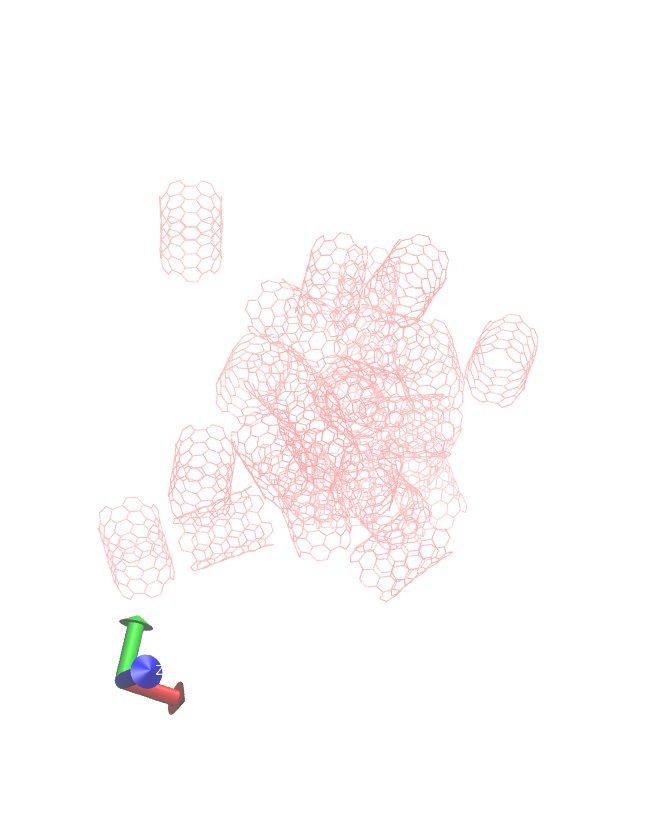Dear lammps users,
Hello! I’m trying to equilibrate single wall carbon nanotube system. However, I got a lower density system compare to the reference. I used the following script
units real
dimension 3
atom_style full
neighbor 2.0 bin
neigh_modify every 2 delay 0 check yes page 100000
pair_style lj/charmm/coul/long 10.00 10.10
kspace_style pppm 1.0e-4
bond_style harmonic
angle_style charmm
dihedral_style charmm
improper_style harmonic
kspace_modify gewald 0.195
atom_modify sort 0 0.0
read_data lammps_data01
fix 1 all npt temp 273.15 273.15 100.0 iso 1.0 1.0 1000.0
#fix npt temp 300.0 300.0 100.0
#special_bonds lj/coul 0.0 0.0 0.5 angle yes dihedral yes
timestep 1.0
thermo_style custom step temp pe etotal press vol density
dump 2 all xyz 1000 xyz.file-run10
dump 3 all custom 1000 dump_vmd-run10.lammpstrj id mol type x y z ix iy iz
thermo 1000
restart 1000 data.lj-1.as.benze-run10 data.lj-2.as.benze-run10
run 2000000
It’s a 5 ncell-(6,6) single wall carbon nanotube, but I got a density around 1.2g/cm3. I built the structure with no-charge system and applied kspace_modify command. I also visualized the trajectory. There is some space between carbon nanotubes, and the CNT looks only vibrating after the density reached to 1.2. Can anybody give me some comments to me? Any help would be appreciated.
Kerwin
